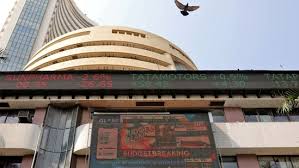The Indian stock market witnessed a historic session on Thursday, June 13, as the Sensex and Nifty 50 indices soared to new record highs. This remarkable performance was buoyed by robust macroeconomic numbers, fueling optimism about the strength of India’s economic growth outlook for the medium to long term. Let’s delve into the details of this exciting market movement and what it signifies for investors and the economy.
Overview of the Market Rally
Sensex Reaches New Heights
The BSE Sensex, India’s benchmark stock index, surged past its previous record, reaching an all-time high. The rally was driven by strong buying in blue-chip stocks across various sectors, reflecting investor confidence in the Indian economy.
Nifty 50 Joins the Party
The NSE Nifty 50 also hit a fresh peak, mirroring the positive sentiment in the broader market. The index’s performance was bolstered by gains in key sectors such as finance, technology, and consumer goods.
Macroeconomic Factors Driving the Rally
Robust GDP Growth
India’s recent GDP figures showcased a healthy growth trajectory, exceeding market expectations. This robust economic performance has instilled confidence among investors about the country’s long-term growth prospects.
Inflation Under Control
With inflation rates stabilizing, the Reserve Bank of India (RBI) has been able to maintain a favorable monetary policy stance. This stability in prices has provided a conducive environment for businesses to flourish.
Rising Foreign Investments
The inflow of foreign direct investment (FDI) and foreign institutional investment (FII) has been a significant factor in the market’s ascent. The increasing interest from global investors underscores India’s attractiveness as an investment destination.
Strong Corporate Earnings
Corporate earnings have shown resilience, with many companies reporting better-than-expected results. This positive earnings momentum has contributed to the upward trajectory of stock prices.
Sectoral Performance: Who Led the Charge?
Financial Services: Banking on Growth
The financial services sector, particularly banks and non-banking financial companies (NBFCs), played a pivotal role in the market’s rise. Strong earnings reports and improved asset quality boosted investor sentiment in this sector.
Technology: Digital Transformation Boom
Tech stocks continued their upward journey, driven by the ongoing digital transformation wave. Companies in the IT services and software sectors saw significant gains, reflecting their robust business prospects.
Consumer Goods: Sustained Demand
The consumer goods sector benefited from sustained demand and strong sales figures. Companies in this sector have capitalized on the growing consumption patterns in India.
Energy: Powering Ahead
Energy stocks, particularly those involved in renewable energy, saw a notable rise. The government’s focus on sustainable energy and favorable policies have created growth opportunities in this sector.
Impact of Government Policies
Pro-Business Reforms
The Indian government’s pro-business reforms have played a crucial role in fostering a favorable investment climate. Measures such as the reduction in corporate tax rates and ease of doing business initiatives have attracted both domestic and international investors.
Infrastructure Development
Massive investments in infrastructure projects have spurred economic activity. The development of highways, railways, and urban infrastructure has created jobs and stimulated demand in related sectors.
Digital India Initiative
The Digital India initiative has accelerated the adoption of technology across various sectors. This push towards digitalization has opened new avenues for growth and innovation.
Investor Sentiment and Market Outlook
Bullish Sentiment Prevails
Investor sentiment remains bullish, driven by positive economic indicators and corporate performance. The record highs in Sensex and Nifty 50 reflect the optimism about India’s growth story.
Long-Term Growth Prospects
The medium to long-term growth prospects of the Indian economy appear strong. Structural reforms, a young demographic, and a growing middle class are key drivers of this optimistic outlook.
Global Economic Conditions
Global economic conditions, including trade dynamics and geopolitical factors, will continue to influence the Indian stock market. Investors will keep a close watch on international developments that could impact market sentiment.
Risks and Challenges
While the outlook is positive, potential risks such as inflationary pressures, policy changes, and global market volatility remain. Investors need to stay vigilant and adapt their strategies accordingly.
Investment Strategies for Market Participants
Diversification: Spreading the Risk
Diversifying investments across different sectors and asset classes can help mitigate risks. A well-balanced portfolio can provide stability and enhance returns.
Focus on Blue-Chip Stocks
Investing in blue-chip stocks with strong fundamentals and a proven track record can offer a safe haven during market volatility. These stocks often provide consistent returns over the long term.
Monitoring Economic Indicators
Keeping an eye on key economic indicators such as GDP growth, inflation rates, and corporate earnings can help investors make informed decisions. Staying updated with the latest economic data is crucial.
Long-Term Investment Horizon
Adopting a long-term investment horizon allows investors to ride out short-term market fluctuations. Focusing on the long-term potential of investments can lead to significant wealth creation.
Consulting Financial Advisors
Seeking advice from financial advisors can provide valuable insights and guidance. Professional expertise can help investors navigate complex market conditions and achieve their financial goals.
The Indian stock market’s performance on June 13, with the Sensex and Nifty 50 hitting record highs, is a testament to the country’s robust economic fundamentals and positive investor sentiment. As we move forward, maintaining a balanced investment strategy and staying informed about economic developments will be key to capitalizing on the opportunities in the market.




